What data recovery tools to buy if you want to start a data recovery business?
Free video data recovery training on how to recover lost data from different hard drives?
Where to buy head and platter replacement tools at good prices?
Data recover case studies step by step guide
I want to attend professional data recovery training courses
With rapid development of techniques in the realm of data storage, especially the flash chip, SSD comes into the market again. And what is the SDD? The SSD (solid-state drive) is a storage device that uses solid-state memory to store persistent data, emulating a hard disk drive interface, thus easily replacing it in most applications. The SSD is commonly composed of DRAM volatile memory or primarily NAND flash non-volatile memory.
There are main two components in the SSD; they are cache and energy storage. For the cache, a flash-based SSD uses a small amount of DRAM as a cache, similar to the cache in HDD. A director of block placement and wear leveling data is also kept in the cache while the drive is operating; for the energy storage, another component in higher performing SSDs is a capacitor or some form of batteries. These are necessary to maintain data integrity such that the data in the cache can be flushed to the drive when power is dropped; some may even hold power long enough to maintain data in the cache until power is resumed.
The performance of the SSD can scale with the number of parallel NAND flash chips used in the device. A single NAND chip is relatively slow, due to narrow asynchronous IO interface, and additional high latency of basic IO operation. When multiple NAND devices operate in parallel inside an SSD, the bandwidth scales, and the high latencies can be hidden, as long as enough outstanding operations are pending and load is evenly distributed between devices.
Comparing with traditional HDD, which one is better in performance? Currently, it’s very hard to make a judgment on them in performance; however, there are possibilities to make some comparison between them.
Advantages:
? Faster start-up because no spin-up is required
? Fast random access because there is no read/write head
? Low read latency times for RAM drives. In applications where hard disk seeks are the limiting factor, these results in faster boot and application launch times.
? Consistent read performance because physical location of data is irrelevant for SSDs
? File fragmentation has negligible effect.
? Silent operation due to the lack of moving parts
? Low capacity flash SSDs have a low power consumption and generate little heat when in use
? High mechanical reliability, as the lack of moving parts and extremes of temperature. This makes SSDs useful for laptops, mobile computers, and devices that operate in extreme condition.
? For low-capacity SSDs, lower weight and size: although size and weight per unit storage are still better for traditional hard drives and micodrives allow up to 20GB storage in a compact flash form-factor.
? Flash SSD’s have twice the data density of HDD’s; even up to 1TBdisks more than 2TB is atypical even for HDD’s.
? Failures occur less frequently while writing/erasing data, which means there is a lower chance of irrecoverable data damage.
Disadvantages:
? SSDs are still more expensive per gigabyte than the traditional hard disk. Whereas a normal flash drive is between US$2-3.45 per gigabyte, the traditional one are around US$0.38 per gigabyte.(up to 2008)
? The capacity of SSDs is currently lower than that of hard drives
? Asymmetric read/write performance can cause problems with certain functions where the read and write operations are expected to be completed in a similar timeframe.
? Flash-memory cells have limited lifetimes and will often wear out after 1,000 to 10,000 write cycles for MLC, and up to 100,000 write cycles for SLC. As a result of wear leveling and write combining, the performance of SSDs degrades with use.
? SSDs are far slower than conventional disks during small writes and can suffer from write fragmentation
? DRAM-based SSDs (but not flash-based SSDs) require more power than hard disks, when operating; they still use power when the computer is turned off, while hard disks do not.
Through above comparisons, a conclusion can be draw that the SSD without dominated advantages over traditional HDD can’t replace the HDD in the storage market within one to two years. Because there is some Achilles Heel, such as capacities: write speed and lifetimes of flash memory cells and cost in particular. Currently, the biggest obstacles for huge commercialization of the SSDs are the high cost, and there are still so many steps for manufacturers of the SSDs to go in order to embrace their springtime, expect for the high cost.
And supposed that the manufacturers for the SSDs had settled the problems mentioned above, especially the high cost. It is inevitable trend for the domination of the SSDs over storage market. Therefore, the data recovery also will enter into renewed era, and how much possibilities for the data recovery corporations to take data recovery for the new technologies of storage. Of course, there are much possibilities as much as traditional one, even much more opportunities for the data recovery corporations to share. Because the lifetimes of the flash-memory cells used to store data are limited, consequently, there are many risks for the data loss, so there are many market shares for data recovery corporations to explore; while the cost of the SSDs is increasingly dropping, thanks to the improvement of the chip technologies.
However, the technologies of the SSDs are much more complicated than traditional HDDs’, even more complicated than RAID HDD. Thus there are few corporations have abilities to cope with such thorny problems. Fortunately, the worldwide leading R&D data recovery equipment, Salvationdata, has been making concerted efforts to strengthen his R&D team to break down this technical barrier during the data recovery, one of whose is wear leveling. It is reported on reliable authority that the Salvationtata will release a new product to overcome difficulties in the process of SSD data recovery within one or two years.

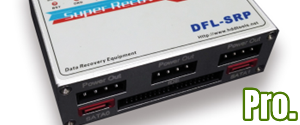
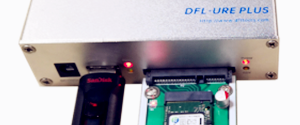
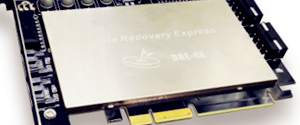

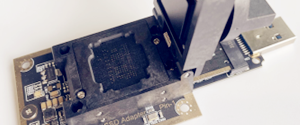
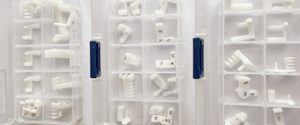
No Comments
[…] more… Tags: dram, easily-replacing, janukowicz, outlook, solid state drive, solid state drives, solid state hard drives, thus-easily […]